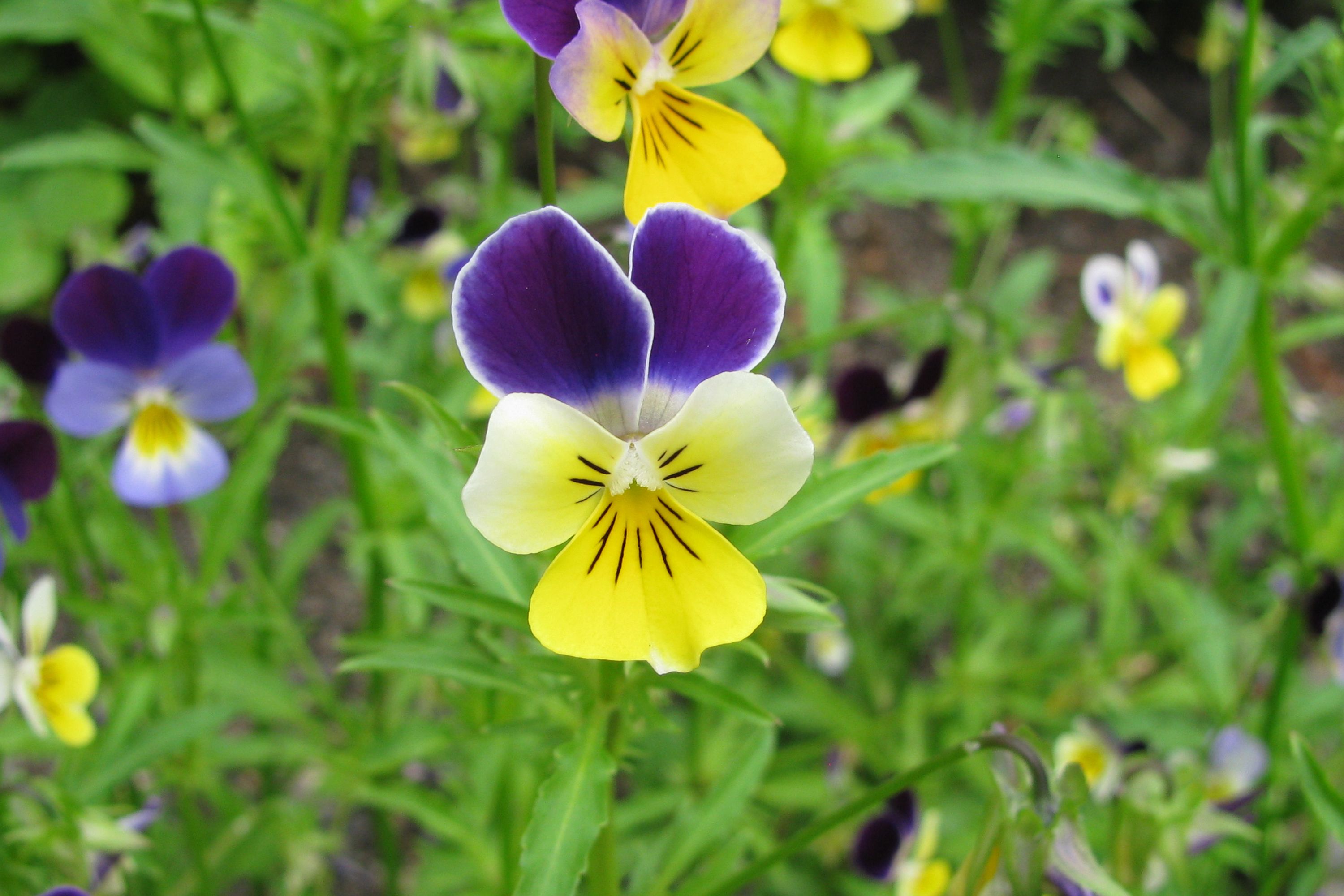Wild pansy
(Viola tricolor)

Description
Viola tricolor, commonly known as heartsease or Johnny-jump-up, is a small, herbaceous plant that belongs to the Violaceae family. It is a popular garden plant and has been used for medicinal purposes for centuries. In this article, we will explore the morphology, habitat, cultural significance, and medicinal uses of this fascinating plant. Morphology: Viola tricolor is a short-lived perennial plant that grows up to 20 cm tall. The stem is weak and branching, and the leaves are simple, alternate, and ovate in shape. The leaves are dark green in color and have scalloped margins. The flowers of Viola tricolor are the most striking feature of the plant. They are small and delicate, measuring approximately 1-2 cm in diameter. The flowers have five petals, with the upper two petals being blue or purple in color and the lower three petals being yellow. The flowers are borne on long, slender stalks that arise from the leaf axils. The plant blooms from late spring to early summer. Habitat: Viola tricolor is native to Europe but has been naturalized in many parts of the world. It is commonly found in meadows, fields, and along the edges of woods. The plant prefers moist, well-drained soil and partial shade. Cultural Significance: Viola tricolor has a long history of cultural significance. It was a popular plant in medieval gardens and was used as a symbol of love and faithfulness. The plant was also associated with the Virgin Mary and was used to decorate churches during the Middle Ages. In Germany, Viola tricolor is known as the "Stiefmütterchen," which translates to "little stepmother," and was thought to have magical properties. In some cultures, the plant was used in love potions and was believed to help mend broken hearts. Medicinal Uses: Viola tricolor has a long history of medicinal use. The plant contains a variety of compounds, including flavonoids, saponins, and anthocyanins, which are believed to be responsible for its medicinal properties. The plant has been used for a variety of ailments, including respiratory infections, skin conditions, and digestive issues. Here are some of the medicinal uses of Viola tricolor: Respiratory Infections: Viola tricolor has been used to treat respiratory infections such as bronchitis, coughs, and colds. The plant contains mucilage, which helps soothe irritated mucous membranes and reduce inflammation. Skin Conditions: Viola tricolor has been used to treat a variety of skin conditions, including eczema, psoriasis, and acne. The plant contains salicylic acid, which has anti-inflammatory and exfoliating properties. Digestive Issues: Viola tricolor has been used to treat digestive issues such as constipation, diarrhea, and bloating. The plant contains compounds that help regulate bowel movements and reduce inflammation in the digestive tract. Anxiety and Insomnia: Viola tricolor has been used to treat anxiety and insomnia. The plant contains compounds that have a calming effect on the nervous system and can help promote relaxation. Conclusion: Viola tricolor is a fascinating plant with a long history of cultural significance and medicinal use. Its delicate flowers and colorful petals make it a popular garden plant, while its medicinal properties have made it a valuable herb for centuries. Whether you're looking to add a splash of color to your garden or seeking a natural remedy for an ailment, Viola tricolor is a plant worth exploring.
Taxonomic tree:







